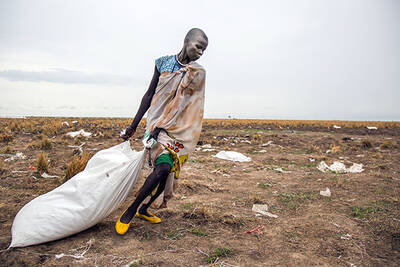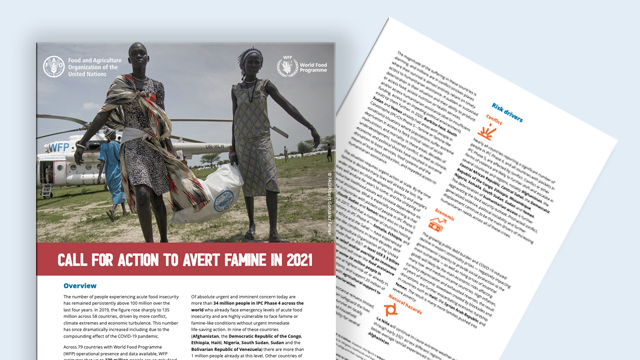A world on the edge
The latest edition of the FAO-supported Global Report on Food Crises found that 155 million people in 55 countries and territories experienced high acute food insecurity last year – 20 million more than in 2019.
Now, in 2021, a toxic mix of pre-existing threats like conflict, climate shocks, and economic disruptions compounded by the COVID-19 hammer blow are pushing even more people into deepening levels acute hunger.
Already some communities in Ethiopia, southern Madagascar, South Sudan, and Yemen are in likelihood enduring famine-like or “famine-likely conditions.” Around 45 million people globally are in emergency levels of food insecurity and at high risk of plummeting into famine if hit by with another dry spell, another animal disease outbreak, another shock. Another 227 million people are expected to move into at least crisis or worse levels of acute food insecurity in 40 countries where projections are available. (Learn about the IPC acute hunger classification scale here.)
To prevent vulnerable communities from falling into a hunger catastrophe and avert widespread famine from breaking out in 2021, a twin-track approach in urgent life-saving humanitarian action is required.
FAO, the UN Secretary General, the UN Office for the Coordination of Humanitarian Affairs and the World Food Programme have joined forces to take urgent action on multiple fronts to stave off the risk of famine in 2021.
FAO’s focus is on livelihoods interventions that allow at risk communities to produce food for their families and communities; reduce the need for food aid; and avoid sell-offs of productive assets to buy food to survive (which puts people on the “off ramp” of self reliance and means they could end up needing long term food assistance to survive ).
Agricultural production is possible in crisis contexts, and makes a world of difference
We know this is the case – because we have done it.
In cut-off, highly inaccessible areas and isolated rural areas, the critical role of local and backyard food production in keeping families alive cannot be underemphasized. The importance of sustaining livestock cannot be overstated. For a family on the edge, just one cup of milk a day can make the difference between life and death. In such situations, backyard food production represents a firewall between survival and the worst-case scenario.








